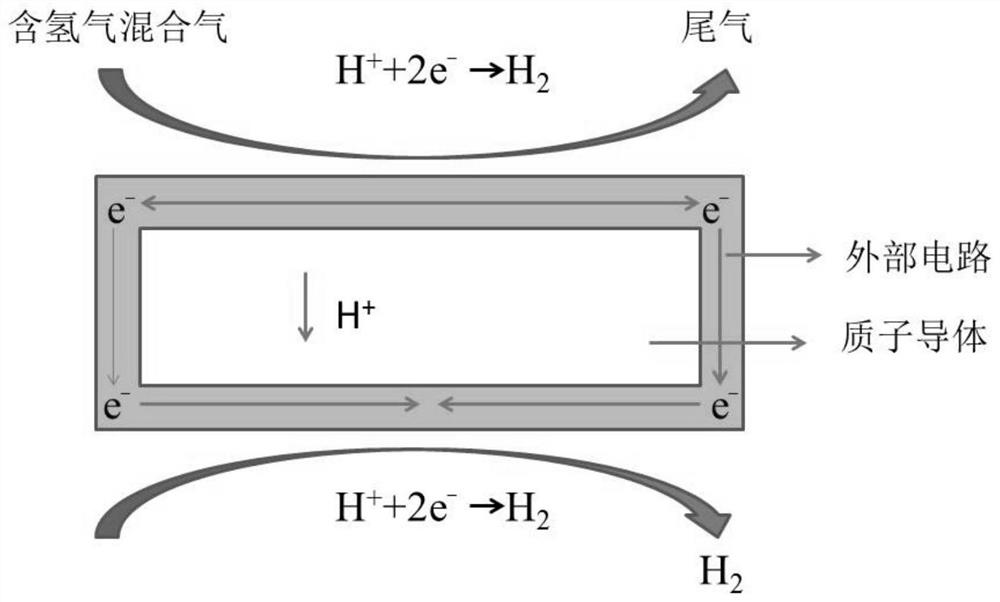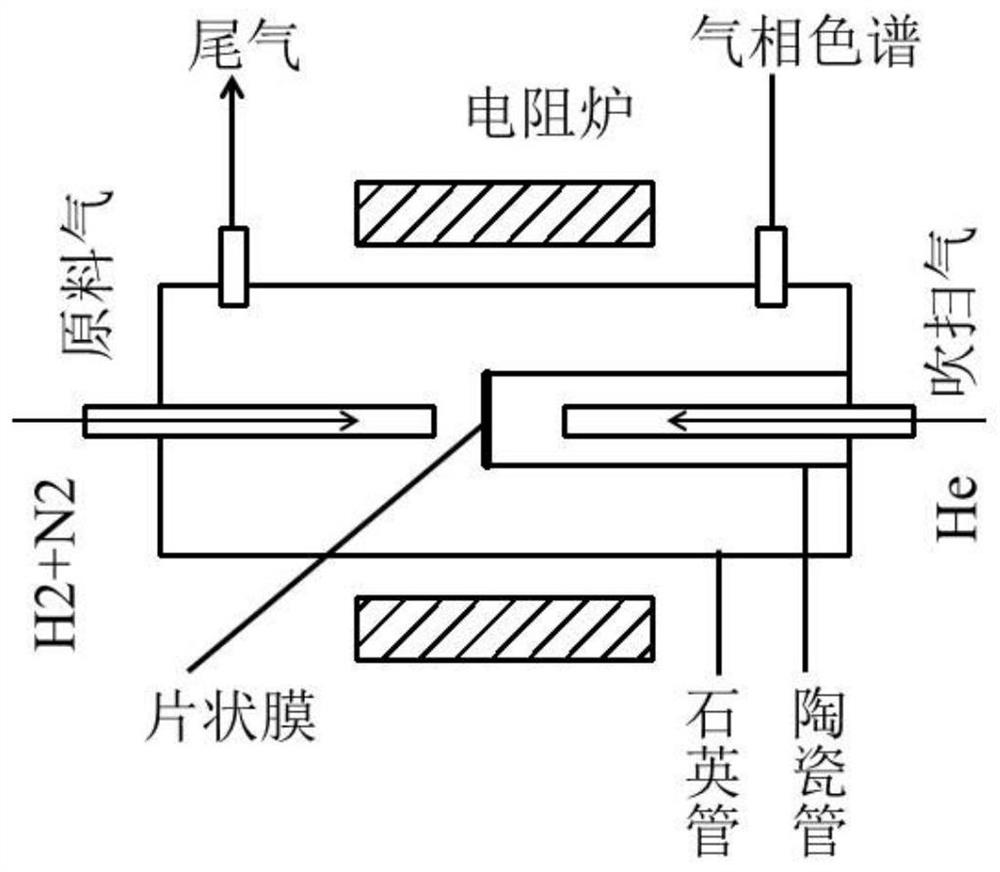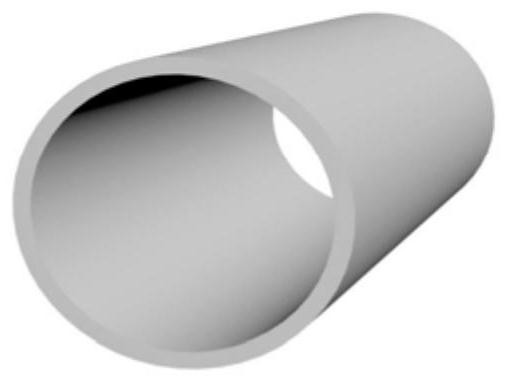Proton-electron mixed conductor hydrogen permeable membrane and its preparation method and hydrogen permeable membrane reactor
A technology of mixed conductors and electronic conductors, which is applied in the field of hydrogen permeable membrane reactors, can solve the problems of not being able to be used as hydrogen permeable membranes, lack of electron transfer channels, and inability to realize hydrogen purification, so as to improve energy utilization and high hydrogen permeation rate , Increase the effect of practicality
- Summary
- Abstract
- Description
- Claims
- Application Information
AI Technical Summary
Problems solved by technology
Method used
Image
Examples
Embodiment 1
[0043] Pour 1g of polybenzimidazole (mPBI) and 10mL of dimethylacetamide (DMAC) into the flask, heat the electric heating mantle at 120°C, stir magnetically for 8h, then add 0.063g (5%) graphite and 5mL of dimethylacetamide ( DMAC) magnetically stirred for 8 hours, and finally added 0.20 g (20%) of triglycidyl isocyanurate (TGIC) as a cross-linking agent, heated at 60° C. with an electric heating mantle, and magnetically stirred for 2 hours to obtain a mixed solution. The mixed solution was ultrasonically oscillated for 30 min to remove air bubbles. Cast the mixed solution on a glass plate in an oven at 60°C to form a film. After 2 hours, the solvent evaporates. The temperature is raised to 160°C and kept for 5-6 hours. Finally, the film is taken out and soaked in deionized water until the film falls off naturally.
[0044] Cut the membrane into discs with a radius of 0.5 cm and soak the membrane in 1mol / L phosphoric acid for 24 hours, take out the surface of the membrane and ...
Embodiment 2-3
[0054] Examples 2-3 are the same as Example 1, the only difference is that the amount of crosslinking agent added is 0.25g (25%) and 0.30g (30%) respectively, and the mechanical strength is shown in Table 3.
[0055] table 3
[0056] Example 1 Example 2 Example 3 Cross-linking agent (%) 20% 25% 30% Mechanical strength (MPa) 4.463 6.55 9.53
Embodiment 4
[0058] Pour 1g of polybenzimidazole (mPBI) and 10mL of dimethylacetamide (DMAC) into the flask, heat the electric heating mantle at 120°C, stir magnetically for 8h, then add 0.14g (10%) graphene and 5mL of dimethylacetamide (DMAC) magnetic stirring for 8 hours, and finally adding 0.25 g (25%) of triglycidyl isocyanurate (TGIC) as a cross-linking agent, heating at 60° C. with an electric heating mantle, and magnetic stirring for 2 hours to obtain a mixed solution. The mixed solution was ultrasonically oscillated for 30 min to remove air bubbles. Cast the mixed solution on a glass plate in a 60°C oven to form a film. After 2 hours, the solvent evaporates; raise the temperature to 160°C and keep it for 5-6 hours. Finally, take out the film and soak it in deionized water until the film falls off naturally.
[0059] Cut the membrane into discs with a radius of 0.5 cm and soak the membrane in 1mol / L phosphoric acid for 24 hours, take out the surface of the membrane and brush with Pt...
PUM
 Login to View More
Login to View More Abstract
Description
Claims
Application Information
 Login to View More
Login to View More - R&D
- Intellectual Property
- Life Sciences
- Materials
- Tech Scout
- Unparalleled Data Quality
- Higher Quality Content
- 60% Fewer Hallucinations
Browse by: Latest US Patents, China's latest patents, Technical Efficacy Thesaurus, Application Domain, Technology Topic, Popular Technical Reports.
© 2025 PatSnap. All rights reserved.Legal|Privacy policy|Modern Slavery Act Transparency Statement|Sitemap|About US| Contact US: help@patsnap.com



